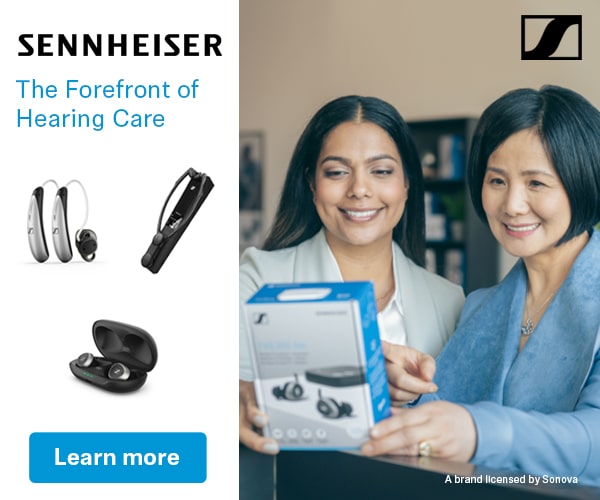by Kim Cavitt, AuD
Audiologists, irrespective of their practice settings, appear to know very little about the foundational aspects of their businesses. Many businesses, especially private practices, were started with a dream and a prayer and without a business plan and, as a result, little to no thought to “what do I need to bring in cover my expenses”.
This number puts a price to the value of an audiologist’s time and expertise.
Now, let’s fast forward a few years. With the changes happening with insurance (flat or decreased allowable rates, increasing involvement of third-party networks and administrators), consolidation (increasingly competing against your own vendors for patients), big box and over the counter hearing aid competition, and an audiologist’s continued commitment to free and bundled care, the need to determine one’s “breakeven rate” has never been more important.
Breakeven analyses can be valuable in:
- Evaluating managed care and provider network agreements to determine if participation is financially viable for your practice and its financial commitments.
- Determining if your current pricing structure, especially for bundled hearing aid delivery, financially covers the care and service provided to your average patient.
- Creating pricing strategies for the items and services your practice offers, especially services which are non-covered by managed are entities.
- Establishing appointment types and scheduling efficiencies (for example, you can afford to schedule three hours for a basic vestibular evaluation if your average third-party allowable rate is $150) for the services your practice provides.
Pricing strategies based upon a business’s overhead, salaries and general expenses is a hallmark of any business plan. For audiologists and audiology practices, we need to consider how much does each full-time, revenue generating provider have to bring in, per hour of available, scheduled time, to breakeven (cover the variable and fixed expenses) and, hopefully, make a profit.
There is no “industry standard” for the breakeven amount. It is greatly influenced by:
- Geographical location (which effects rent and the costs of doing business)
- Number of employees (and their associated salaries and benefits)
- Number of office locations
- Types of expenses being absorbed by the business entity (such as vehicles)
- Debt/loan responsibilities
Breakeven analyses can be completed for ANY type of revenue generating audiology practice. I have not found a situation, to date, where this could not be completed.
For private practices, the exercise can be easily and quickly done through analysis of a Quickbooks Summary report for a 12 month window of time.
For otolaryngology, hospital and medical practices, completing an analysis can be a long, arduous process that can take months and even years, especially if the entity has never set audiology out as a separate cost center or under a separate budget. It is important, in these situations, to work with your practice management and establish your goals for this project and what you hope to achieve, in terms of pricing and revenue generation, upon completion.
There are some excellent resources available to assist practices in creating a breakeven analysis. They include:
- Audiology Online
- American Academy of Audiology
- BP Plans
- American Speech-Language-Hearing Association
In closing, without a breakeven analysis, there is no way for any practice to truly know if they are really maximizing revenues and making a “real” profit. Also, no practice can create tangible hearing aid service pricing or undertake an exploration of an unbundled or even itemized hearing aid delivery model without knowledge of their breakeven needs.
In my experience, the completion of a breakeven analysis often becomes an “aha” moment for practice owners and management. It either illustrates a rationale for maintaining the status quo or declining network participation or it paints a picture of insufficient prices, lagging revenues and an explanation for cash flow struggles.
This is an empowering, practice changing exercise and number. Do not wait until it is too late to know what you need, why you need it and the value of “you”.
 Kim Cavitt, AuD was a clinical audiologist and preceptor at The Ohio State University and Northwestern University for the first ten years of her career. Since 2001, Dr. Cavitt has operated her own Audiology consulting firm, Audiology Resources, Inc. Audiology Resources, Inc. provides comprehensive operational, compliance and reimbursement consulting services to hearing healthcare providers. She is a Past President of the Academy of Doctors of Audiology (ADA), serves as the Chair of the State of Illinois Speech Pathology and Audiology Licensure Board, and serves on committees through ADA , ASHA and AAA. Dr. Cavitt is an Adjunct Lecturer at Northwestern University and the managing audiologist of the Think Audiology initiative.
Kim Cavitt, AuD was a clinical audiologist and preceptor at The Ohio State University and Northwestern University for the first ten years of her career. Since 2001, Dr. Cavitt has operated her own Audiology consulting firm, Audiology Resources, Inc. Audiology Resources, Inc. provides comprehensive operational, compliance and reimbursement consulting services to hearing healthcare providers. She is a Past President of the Academy of Doctors of Audiology (ADA), serves as the Chair of the State of Illinois Speech Pathology and Audiology Licensure Board, and serves on committees through ADA , ASHA and AAA. Dr. Cavitt is an Adjunct Lecturer at Northwestern University and the managing audiologist of the Think Audiology initiative.
*featured image from How I Met Your Mother, 20th Century Fox Television







